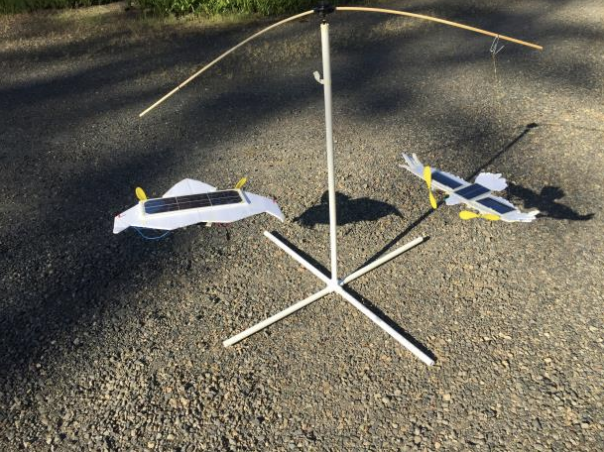Solar Mobile Design Challenge Unit Plan

Students will design circuits using various solar panels in order to power motors with propellers.
Students will learn about solar energy transfer in order to power the motors on their solar aircraft.
Students will research an aircraft and draw an outline of the aircraft onto foam board.
Students will explore the concept of center of gravity.
Students will test the efficiency of various light sources (incandescent, fluorescent, LED, halogen) for usage by a PV cell.
Students will use their prior testing results and knowledge to engineer a solar-powered mobile.
Students will work to transfer the most energy from the solar panels considering all the tested variables in order to power the fastest, most efficient mobile.
Students will demonstrate and explain why their solar mobile should be chosen for the solar mobile display in the children’s museum.
This unit involves students learning about transferring solar energy to small motors, exploring the center of gravity and testing light sources (including the sun). The culminating engineering design project gives students the chance to pull together their new learning in order to design a tabletop solar powered mobile. As students explore and test their prototype, a variety of variables such as circuitry types, balance/stability, motor speed and propeller direction need to be considered before the fastest moving mobile can be constructed.
In the beginning of this unit, students will watch a short video and read an article about a solar powered aircraft, learning that manned and unmanned aircraft CAN be powered by solar (Read about the aircraft here: “NASA Solar Impulse Fact Sheet” https://www.nasa.gov/centers/armstrong/news/FactSheets/FS- 034-DFRC.html )
Questions that might arise are:
- How was the aircraft able to run just on solar power?
Is there a way to power small aircrafts inside the classroom to learn more about solar power?
How can various solar panels be connected in order to power stronger motors with propellers?
How can the motors and solar panels be mounted on the aircraft in order to balance the
aircraft?
What kind of light could be used to power solar panels if the sun is not available?
How can we fly the planes and night and store energy in batteries?
What is the best reflector in order to reflect light to the solar panels?
Throughout the following lessons, students will follow a scenario where they are designing a small mobile for a children’s technology museum. At the end of the unit, students will solve a design challenge and engineer a mobile by using solar panels mounted on the top of foam aircraft to power motors with propellers balanced on a central pole. The challenge is to transfer the most energy from the solar panels in order to gain optimal power to run the motors, which in the end gives their mobile the fastest speed.
Their final project will be a proposal and demonstration for the museum’s board of directors.
